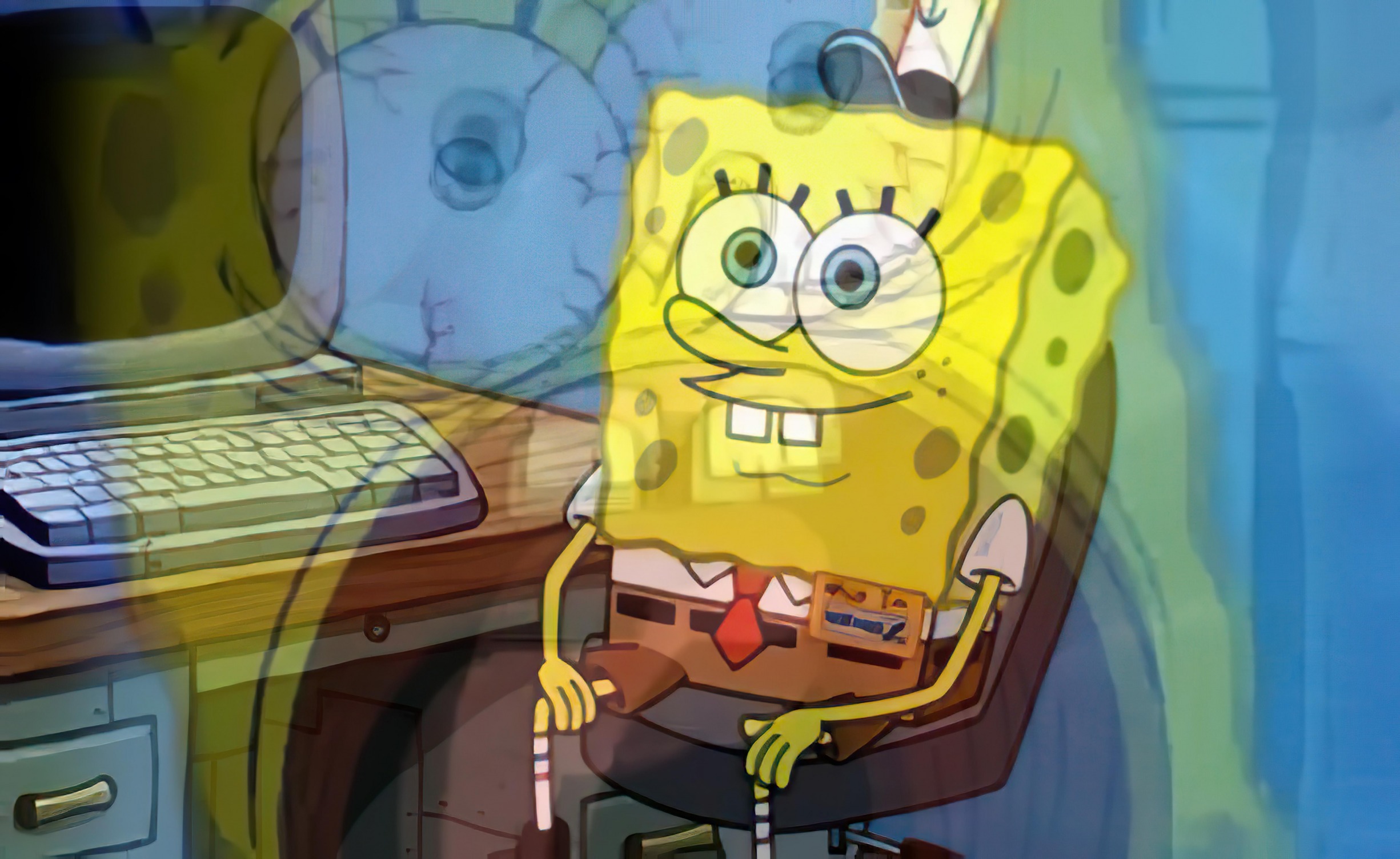Unleashing The Scream Meme: Origins & Cultural Impact
Is there a single image that encapsulates the zeitgeist of the digital age more effectively than "The Scream" meme? The answer is a resounding no. This meme, born from Edvard Munch's iconic painting, has become far more than just a fleeting internet trend; it is a cultural phenomenon, a versatile language understood across the globe, and a powerful tool for expression in the 21st century.
Delving into the world of the "Scream" meme unveils a rich tapestry of digital culture, a testament to how art, technology, and human emotion converge to shape our online experiences. The meme's journey offers a unique lens through which we can examine the evolution of online communication, the power of shared experiences, and the ever-changing landscape of internet humor. This deep dive aims to dissect the meme, examining its origins, its rise to prominence, its various forms, and its lasting impact on how we interact, react, and understand the world around us.
| Category | Details |
|---|---|
| Original Artwork | "The Scream" by Edvard Munch (1893) |
| Origin of the Meme | Early 2000s, online forums and message boards |
| Initial Digital Adaptation | Digitized image with overlaid text |
| Peak Popularity | Mid-2010s |
| Primary Function | Expressing a wide range of emotions, from frustration and anxiety to humor and surprise |
| Notable Variations | Reaction Scream, Social Commentary Scream, Artistic Scream |
| Cultural Impact | Widespread usage in online discourse, mainstream media, and marketing campaigns |
| Current Status | Enduring cultural icon; continues to be adapted and shared across platforms |
| Key Characteristics | Adaptability, versatility, relatability, visual impact |
| Psychological Appeal | Offers emotional release, humor, and a sense of shared experience |
| Potential Drawbacks | Risk of overuse, potential for misuse, and the need for responsible engagement |
| Future Trends | Integration with AR/VR, personalized meme experiences, AI-driven adaptations |
| Reference Website | Wikipedia - The Scream |
The genesis of the scream meme is rooted in the brushstrokes of Edvard Munch's seminal artwork, "The Scream," completed in 1893. This expressionist masterpiece, depicting a figure in a state of existential anguish against a backdrop of turbulent colors, has resonated with audiences for over a century. The painting's powerful depiction of raw emotionfear, anxiety, and despairprovided the perfect foundation for the meme that would later capture the collective sentiment of the internet.
- Explore The Luna Bella Metro Video A Global Sensation
- Bruce Boltz Insights Lessons From A Business Trailblazer
The transition from canvas to digital format was a natural progression, fueled by the accessibility of image editing software and the burgeoning online communities of the early 2000s. Initially, the digitized image of "The Scream" was adopted by users of online forums and message boards. These initial adaptations were relatively straightforward, often incorporating humorous captions that amplified the painting's inherent emotional intensity. Think of early meme culture, where a simple image macro could capture a feeling. The image was then repurposed to the digital landscape. These initial interactions, while simple, set the stage for what would come next.
The evolution of the scream meme mirrors the broader trends and transformations within digital culture. The rise of meme culture was a direct result of the internets power, but the evolution of the meme itself also depended heavily on advancing technology. The early iterations relied heavily on the manual creation, but that soon changed.
Technological Innovation
Technological advancements have, quite naturally, played a crucial role in the memes ongoing evolution. The advent of user-friendly software like Photoshop and the emergence of online meme generators empowered creators to experiment with the original image, leading to an explosion of creativity and a wide range of adaptations. Users could now create more nuanced reactions to the same subject. The increased accessibility of these tools allowed people to build on the established meme, and to personalize it to their own contexts.
- Big Box Braids Styles Care Amp Tips For A Stunning Look
- Find Bangladeshi Restaurants Near You A Flavorful Guide
The rise of social media platforms like Facebook, Twitter, and Instagram further accelerated the distribution of meme content. This allowed the "Scream" meme to gain an ever-increasing presence in the digital landscape. As internet usage shifted from static websites to mobile platforms, and as digital literacy improved, the meme's versatility became increasingly apparent.
The adaptability of the scream meme lies at the core of its widespread appeal. It is a chameleon, morphing to fit a variety of contexts and audiences. It transcends language barriers and cultural differences, resonating with people across the globe. Whether used for comedic effect, to offer social commentary, or as a form of artistic expression, the meme serves as a uniquely powerful tool for communication in the digital age.
The memes popularity is measurable. Data from leading digital analytics firms have consistently placed it within the top 10 most shared meme templates globally. Its consistent appearance on major platforms such as Reddit, Twitter, and Instagram has demonstrated it's enduring popularity. These platforms serve as the primary hubs for meme culture, and they show no signs of decreasing in usage. Furthermore, the meme has become a subject of academic interest and has appeared in numerous articles, documentaries, and studies, cementing its status as a cultural phenomenon.
The "Scream" meme, in its essence, is a reaction. The meme format allows a wide audience to create or interpret a number of different types of reactions. These variations are one of the key things that ensure the meme will remain relevant and appealing. The "Scream" meme has evolved over time, leading to its various iterations.
- Reaction Scream: This is the most basic, and perhaps most common, form. Used to convey extreme emotional responses in a range of situations. It's often used in humorous settings.
- Social Commentary Scream: This variant is used to highlight social issues and provoke reflection. It is a direct commentary on the current events and situations of the time.
- Artistic Scream: This is a more visually creative iteration. This iteration incorporates graphic design and animation to produce visually captivating adaptations.
The "Scream" meme has found a home in online discourse, a versatile instrument for expressing emotions, ideas, and observations. Its ability to communicate intricate messages through a succinct and visually impactful format is why it has become such a favorite among internet users. It allows users to comment and provide reactions, often with little more than a single image. The reaction, in this case, is the language.
The meme's versatility is especially evident in political discourse, where it often underscores the absurdity of certain arguments, or reflects frustration with political events. In the entertainment industry, the "Scream" meme is frequently used to comment on pop culture trends, celebrity controversies, or the latest plot twists in popular shows. The meme can express complex, nuanced ideas in a way that words alone often cannot achieve.
The meme's appeal is derived from its ability to tap into the psychological foundations of human emotion. It is designed to elicit feelings of fear, anger, and surprise. This is one of the most potent reasons for the meme's popularity. Its designed to evoke strong feelings.
Research Insights
Psychological research indicates the meme's effectiveness in bridging the gap between personal experiences and a shared collective consciousness. This allows users to process emotions in a communal context. It fosters a sense of connection and understanding between users and the world.
Businesses and marketers quickly recognized the power of the "Scream" meme. The memes inherent attention-grabbing ability and capacity to communicate messages swiftly has made it an excellent choice for marketing campaigns and brand promotions.
Case Studies
Several well-known brands have integrated the "Scream" meme into their marketing strategies with great success. A major beverage company, for example, deployed the meme to launch a viral campaign targeting younger demographics, resulting in a significant boost in sales. This success proves the meme is still a force to be reckoned with. Similarly, a tech startup leveraged the meme to highlight the challenges and triumphs of entrepreneurship, earning widespread praise for its creative and relatable approach.
The meme is not without its critics. Overuse can lead to desensitization and diminish its impact. In addition, concerns have been raised about the ethical implications of using the meme to mock sensitive subjects or target marginalized groups. Its important to acknowledge these critiques and continue to address them.
Addressing Concerns
In response to these concerns, many creators and platforms have established guidelines for responsible meme usage, underlining the significance of empathy, respect, and cultural sensitivity in the creation and sharing of memes.
Looking forward, the "Scream" meme is expected to remain a central part of digital culture. As technology continues to evolve, there will be new opportunities for innovation and adaptation, which will ensure its continued relevance in the years to come.
Predictions
Experts predict developments in augmented and virtual reality will open new avenues for meme creation, allowing users to interact with the "Scream" meme in immersive and engaging ways. Furthermore, AI integration could lead to the development of personalized meme experiences tailored to individual preferences and interests.
- Sneaker Reps Your Ultimate Guide To Quality Ethics More
- Find Your Ideal Playa Cerca De Mi Beach Guide Tips

Spongebob Yelling At Squidward Meme Spongebob Screaming Meme Generator

"screaming" Meme Templates Imgflip

Scream Meme